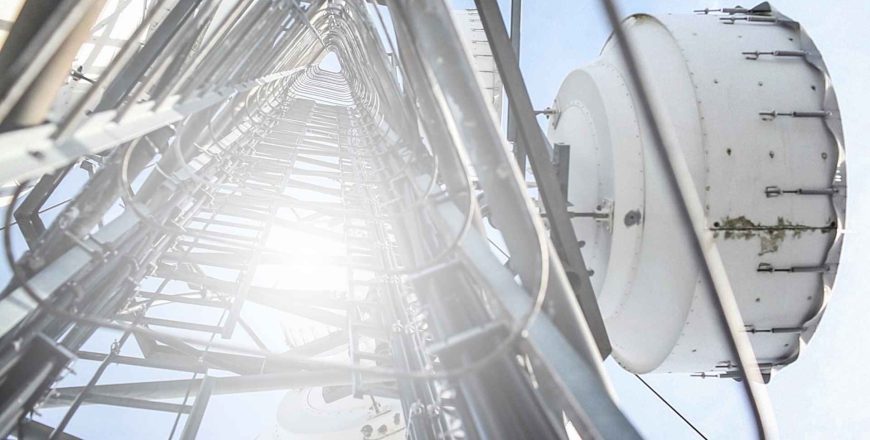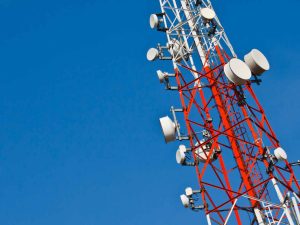Microwave Transmission Engineering and Link Planning

Course Overview
This course seeks to equip participants with robust knowledge in planning telecommunication transmission networks using modern radio-relay digital microwave radio. The course will cover in detail all the important aspects of radio propagation, starting from free-space loss and absorption loss, followed by statistical analysis of various phenomena impairing radio reception process – rain, multipath fading (both flat and selective), K-factor variation and ducting. The introductory part of the course reviews basic parameters of the microwave radio systems, antenna, transmission lines and all other auxiliary equipment used during implementation of microwave radio-relay sites.
Classroom discussion of all the above topics will be complemented by interactive student exe4rcises. The course concludes with a guide to several ITU-T/ITU-R references that participants can access for additional information.
Target Audience
- Transmission Engineers
- Network Planners
- Technical Project Managers who are involved in the planning, deployment, commissioning, or operation of modern radio-relay digital microwave radio
Duration & Training Format
- Classroom: 5 days
- LIVE Virtual: 35 hours
*Note:
- A minimum of 8 or more participants is required for a Classroom session to commence.
- A minimum of 6 or more participants is required for a LIVE Virtual session to commence.
- LIVE Virtual courses can be conducted for 5 hours or 7 hours daily. Please note that the number of training days will be extended if you opt for 5 hours daily.
Upcoming Course Dates
There are no upcoming dates for this course. If you are keen on attending this training, please register your interest via our course enquiry form for us to open a new schedule for this course.
Course Objectives
At the end of this course, participants will be able to:
- Understand the essentials of transmission engineering
- Understand microwave path planning
- Understand why a certain link or network is not functioning according to performance specifications and successfully resolve the issue
- Select the best component for the network
- Design and maintain cost effective solutions
- Design and manage microwave networks that will not suffer from interference or disturb other radio systems in the vicinity
- Optimize and improve the network performance and quality
Key Benefits
Participants will gain a comprehensive understanding of transmission technologies and applications, including the principles of transmission systems, types of transmission media, modulation techniques, and their applications. They will also gain experience and practice in analyzing and designing transmission systems, enabling them to apply their knowledge in real-world scenarios.
Course Outline
- Introduction and Basic Definitions
- Available RF Spectrum
- Hierarchy in Transmission Networks
- Exercise 1
- International Telecommunications Union (ITU)
- Transmission Media
- Terrestrial Radio-relay Links
- Microwave Versus Fiber Optics
- Mobile Transmission Networks
- Logarithmic Units
- Exercise 2
- Synchronization
- Exercise 3
- Jitter and Wonder
- Microwave Link Planning
- RR Network and System Specification
- Map Study and Preparation of Path Profiles
- Field Survey and Site Determination
- Determination of Antenna Heights
- Path Calculations
- Performance and Availability
- Frequency Spectrum Allocation
- Equipment Specifications and Selection (Microwave Radio, Digital Modulation, Exercise 4, Receiver Sensitivity, Signal Equalizers, Forward Error Correction (FEC), Scrambling and Interleaving, Network Management)
- Types of Antenna (Antenna Gain, VSWR, Cross-polarization Discrimination, Radiation Pattern, Exercise 5, Typical Antenna Characteristics, Near Field Versus Far Field, Antenna Misalignment)
- Transmission Lines (Feeders)
- Power Supply
- Towers and Masts
- Shelters and Containers
- Auxiliary Equipment
- Economic Considerations
- Link Budget Calculation
- Transmission and Reception
- Exercise 6
- Link Budget with Branching Circuitry
- Microwave Propagation
- Free Space Propagation
- Atmospheric Absorption
- Rain Attenuation
- Exercise 7
- Atmospheric Refraction (Refractive Ray Bending, Radio and Optical Refractivity, Gradient of Refractive Index)
- Anomalous Propagation
- Exercise 8 (Substandard Refraction, Ducting and Blackout Fade)
- Fresnel Zones Concept (Clearance Criteria)
- Terrain Related Effects (Reflections (Analysis and Countermeasures), Diffraction)
- Exercise 9
- Multipath Fading Mechanism-flat Fading (Vigants, Barnet Model)
- Exercise 10 (4.8.1.2 ITU Rec. P.530-7, Frequency Selective Fading, Applicable Fade Margins, Radio Signature Curves)
- Exercise 11
- Case Study with SW Planning Tool Pathloss v4.0
- Link Engineering
- Site Selection Considerations
- Map Study
- Site Position Determination
- Path Profiles
- Path Clearance Criteria
- Case Study with SW Planning Tool Pathloss v4.0
- Field Survey
- Site Survey
- Path Survey
- Link Performance and Availability Considerations
- Basic Definitions of Reliability, Performance, and Availability
- Exercise 12
- Selected NA (Bellcore) Definitions
- ITU-R Related Definitions (Hypothetical Reference Connection G.821, Worst Month and Annual Parameters)
- Availability and Performance
- Recommendations (ITU-T G.821, ITU-R F.696-based PDH Microwave Link Design Guidelines, Exercise 13, Availability Recommendation ITU-R F.557, ITU-T G.826/828, Basic Sections of the National Portion of HRC, ITU-R F.1668, National Portion Short Haul, ITU-T G.829, ITU-R F.1703)
- Exercise 14
- Comparing NA and ITU-R
- The Need for Protection
- Definitions of Protection Schemes and Arrangements
- Levels of Protection
- Types of Protection
- Ring Protection
- Diversity Arrangements (Frequency Diversity)
- Exercise 15 (Space Diversity, SD Improvement Factor, Exercise 16, Angle Diversity, Combination of Diversities)
- Relative Effectiveness
- Setting up the Frequency Plan
- International Frequency Planas
- Frequency Planning Rules
- Exercise 17 (Two-Frequency Plan, Four-Frequency Plan, Meshed Networks)
- Interference in Digital Networks
- Exercise 18 (Co-channel Interference, Adjacent Channel Interference, Receiver Threshold Degradation)
- Exercise 19 (Interference Mitigation, Planning Considerations)
- Exercise 20
- Step-by-step Procedure of Microwave Hop Design
- Alignment, Testing, and Maintenance (Causes of Unavailability, Sub Refractive Fade, Super Refractive Fade)
- Static and Dynamic Testing
- Antenna Alignment
- Other Problems
- Troubleshooting Procedure
Note: A Certificate of Completion will only be issued upon achieving at least 75% attendance for the course.
Be the first to add a review.
Related Courses
Upcoming Classes
You cannot copy content of this page



